Antenatal Ureaplasma Infection Causes Colonic Mucus Barrier Defects: Implications for Intestinal Pathologies
- PMID: 38612809
- PMCID: PMC11011967
- DOI: 10.3390/ijms25074000
Antenatal Ureaplasma Infection Causes Colonic Mucus Barrier Defects: Implications for Intestinal Pathologies
Abstract
Chorioamnionitis is a risk factor for necrotizing enterocolitis (NEC). Ureaplasma parvum (UP) is clinically the most isolated microorganism in chorioamnionitis, but its pathogenicity remains debated. Chorioamnionitis is associated with ileal barrier changes, but colonic barrier alterations, including those of the mucus barrier, remain under-investigated, despite their importance in NEC pathophysiology. Therefore, in this study, the hypothesis that antenatal UP exposure disturbs colonic mucus barrier integrity, thereby potentially contributing to NEC pathogenesis, was investigated. In an established ovine chorioamnionitis model, lambs were intra-amniotically exposed to UP or saline for 7 d from 122 to 129 d gestational age. Thereafter, colonic mucus layer thickness and functional integrity, underlying mechanisms, including endoplasmic reticulum (ER) stress and redox status, and cellular morphology by transmission electron microscopy were studied. The clinical significance of the experimental findings was verified by examining colon samples from NEC patients and controls. UP-exposed lambs have a thicker but dysfunctional colonic mucus layer in which bacteria-sized beads reach the intestinal epithelium, indicating undesired bacterial contact with the epithelium. This is paralleled by disturbed goblet cell MUC2 folding, pro-apoptotic ER stress and signs of mitochondrial dysfunction in the colonic epithelium. Importantly, the colonic epithelium from human NEC patients showed comparable mitochondrial aberrations, indicating that NEC-associated intestinal barrier injury already occurs during chorioamnionitis. This study underlines the pathogenic potential of UP during pregnancy; it demonstrates that antenatal UP infection leads to severe colonic mucus barrier deficits, providing a mechanistic link between antenatal infections and postnatal NEC development.
Keywords: Ureaplasma; colon; goblet cell; intestinal mucus barrier; necrotizing enterocolitis; perinatal inflammation.
Conflict of interest statement
The authors declare no conflict of interest. The funders had no role in study design, data collection or analysis, data interpretation, manuscript writing, or decision to publish.
Figures

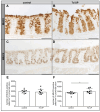

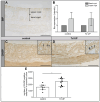

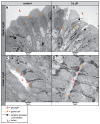
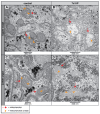
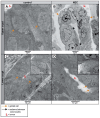
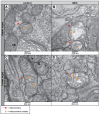


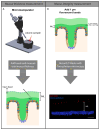
Similar articles
-
Antenatal Ureaplasma infection induces ovine small intestinal goblet cell defects: a strong link with NEC pathology.Tissue Barriers. 2023 Oct 2;11(4):2158016. doi: 10.1080/21688370.2022.2158016. Epub 2022 Dec 28. Tissue Barriers. 2023. PMID: 36576242 Free PMC article.
-
Chronic Intra-Uterine Ureaplasma parvum Infection Induces Injury of the Enteric Nervous System in Ovine Fetuses.Front Immunol. 2020 Mar 17;11:189. doi: 10.3389/fimmu.2020.00189. eCollection 2020. Front Immunol. 2020. PMID: 32256485 Free PMC article.
-
Intestinal Goblet Cell Loss during Chorioamnionitis in Fetal Lambs: Mechanistic Insights and Postnatal Implications.Int J Mol Sci. 2021 Feb 16;22(4):1946. doi: 10.3390/ijms22041946. Int J Mol Sci. 2021. PMID: 33669331 Free PMC article.
-
Ureaplasma and BPD.Semin Perinatol. 2013 Apr;37(2):94-101. doi: 10.1053/j.semperi.2013.01.005. Semin Perinatol. 2013. PMID: 23582963 Free PMC article. Review.
-
The Human Ureaplasma Species as Causative Agents of Chorioamnionitis.Clin Microbiol Rev. 2016 Dec 14;30(1):349-379. doi: 10.1128/CMR.00091-16. Print 2017 Jan. Clin Microbiol Rev. 2016. PMID: 27974410 Free PMC article. Review.
References
MeSH terms
Grants and funding
LinkOut - more resources
Full Text Sources
Miscellaneous

